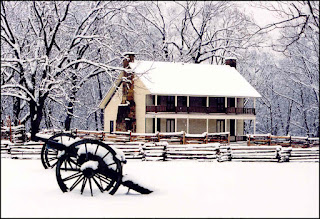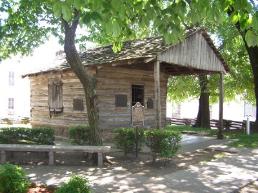 |
Brig. Gen. Alexander Asboth, USA
National Park Service |
This is part two of a six week series on the 150th anniversary of the Battle of Pea Ridge, Arkansas. To read part one first, please click here: http://civilwararkansas.blogspot.com/2012/02/pea-ridge-1-brigadier-general-albert.html.
Among the Union generals preparing to advance on Springfield and the Northwest Arkansas, Brigadier General Alexander Asboth is perhaps the least known. And yet, his life was one of the most remarkable of all.
His name is often given as Alexander Sandor Asboth, but this is a misnomer. "Sandor" is the Hungarian equivalent of "Alexander" so using both is an unnecessary but common duplication.
Born in Hungary in 1811, Asboth was an educated soldier and engineer who allied with Governor Lajos Kossuth in the Hungarian Revolution of 1848. In the movement, which attempted to establish an American style democracy in Hungary, Asboth became a close ally and friend of Kossuth and fought at the Battles of Kapolna and Nagysallo.
 |
Brady Photo of Gen. Asboth
National Archives |
When the revolution collapsed before an assault by the allied forces of Austria and Russia, Asboth joined Kossuth and other Hungarian leaders in fleeing to the Ottoman Empire (Turkey). Congress authorized a relief expedition to save them and President Millard Fillmore dispatched the USS
Mississippi for that purpose.
The Hungarian revolutionaries arrived in the United States to a hero's welcome. Asboth settled in New York where he engaged in surveying and engineering and by 1861 had become a naturalized U.S. citizen. His most noteworthy achievement during his New York years was his role in conducting the survey for what became Central Park.
When the Southern states left the Union, Alexander Asboth was appalled. A true Unionist, he considered the U.S. government to be, as he later told a delegation of Southerners in Florida, "the best in the world." He offered his services to President Abraham Lincoln.
Leaving New York for Missouri, Asboth served as chief of staff (or as he termed it,
adlatus) for General John C. Fremont and participated significantly in the effort to raise and organize an army to preserve the state for the Union. He was nominated by President Lincoln to the rank of brigadier general, but the commission was not confirmed by the U.S. Senate until well after the Battle of Pea Ridge.
 |
Wartime Sketch of Asboth in Missouri
Notice his dog. It always accompanied him. |
During his Missouri years, General Asboth was well known to two other officers who would go on to assume much greater roles in the war: William Tecumseh Sherman and Ulysses S. Grant. Sherman later described him as a personally courageous man whose only real fault as an officer was that he sometimes doubted his own abilities.
When Fremont began his push into southwestern Missouri, Asboth functioned as a major general, leading the 4th Division. He continued this role when General Samuel C. Curtis rose to the command of the army. A noted cavalry leader, even though his division was primarily infantry, Asboth often operated ahead of the main army and would lead the advance to Bentonville and Fayetteville in February of 1862.
His role in the Pea Ridge Campaign will be discussed in coming days and weeks. After the battle, he served in Mississippi, Kentucky and Tennessee before finally being assigned to the command of the District of West Florida as Sherman was planning his March to the Sea. For a time it was thought that Sherman might have to cut his way through to the Gulf Coast and it was expected that Asboth would be able to move rapidly to his relief should the necessity arise.
 |
| Battlefield at Marianna, Florida |
He was severely wounded at the Battle of Marianna, Florida, on September 27, 1864, while carrying out the deepest penetration of Florida by Union forces during the entire Civil War. To learn more, please visit
www.battleofmarianna.com.
Awarded the brevet rank of major general after the war, Asboth was appointed U.S. Minister to Argentina and Uraguay by President Andrew Johnson. He died in Buenos Aires in 1868 from the effects of the wounds he had received in Florida, in particular a wound to his jaw that had never healed.
Buried in Argentina, his body remained there for 122 years until it was returned to the United States in 1990. The general was reinterred at Arlington National Cemetery in a ceremony that included a eulogy written by President George H.W. Bush. Asboth is revered as a hero in his native Hungary to this day.
If you would like to learn more about his service in Florida after the Battle of Pea Ridge, please consider my book:
The Battle of Marianna, Florida: Expanded Edition
. (Also available in Kindle format).
I will continue to post on the 150th anniversary of the Pea Ridge Campaign over coming days and weeks, so be sure to check back often. You can read more about the Battle of Pea Ridge itself at
www.exploresouthernhistory.com/pearidgeindex.












































